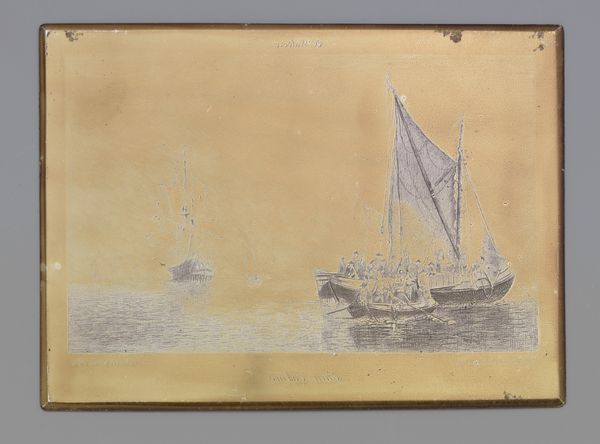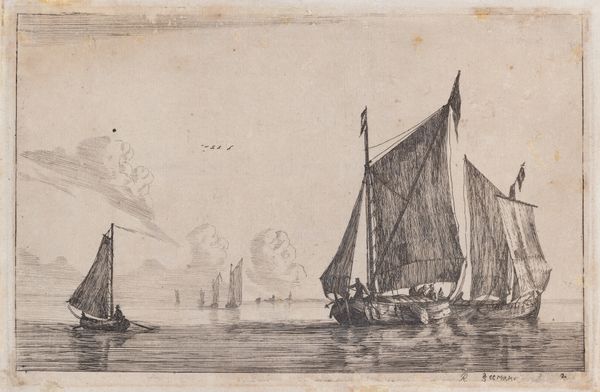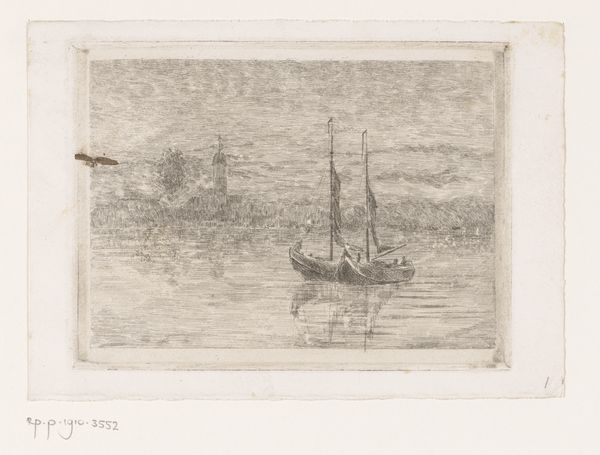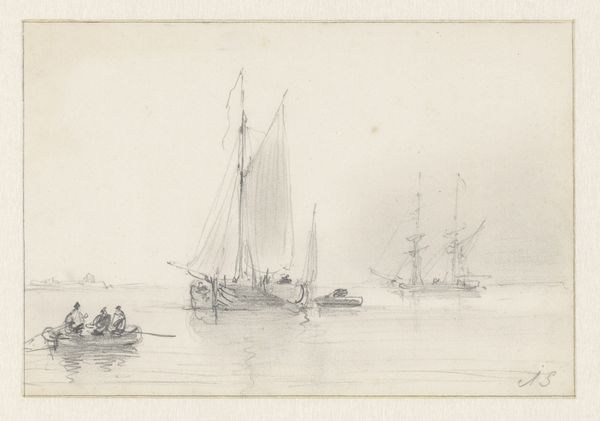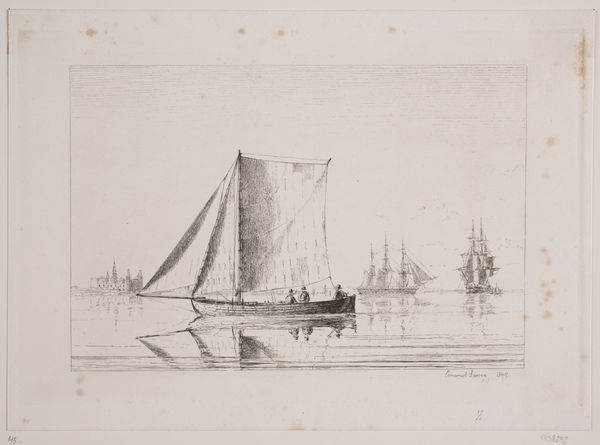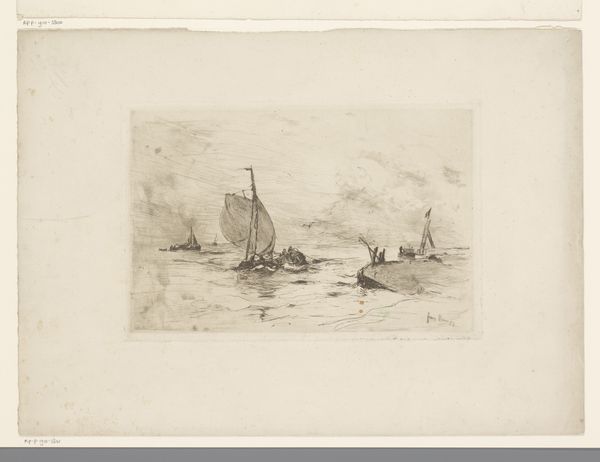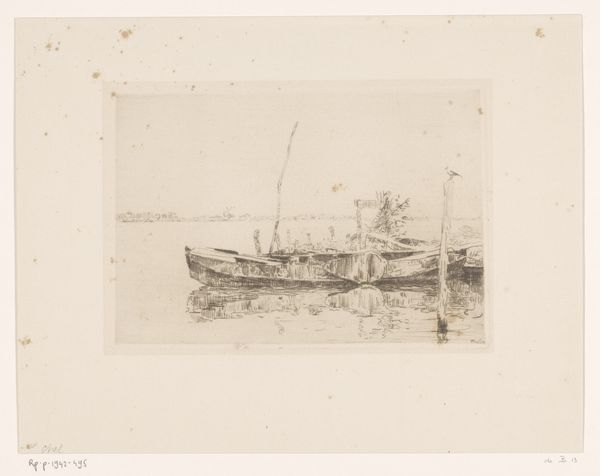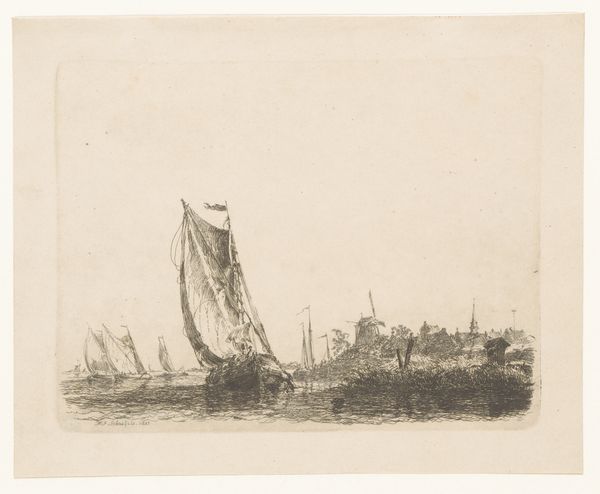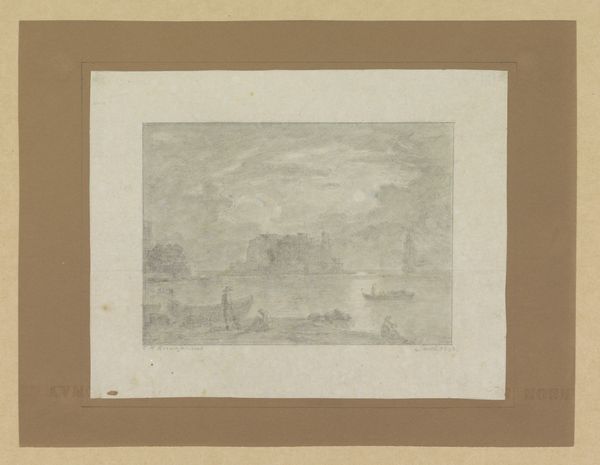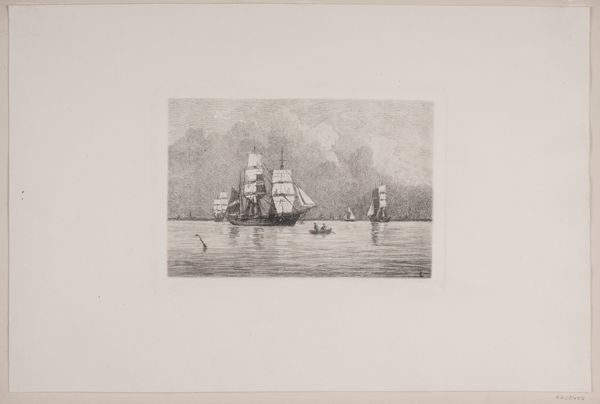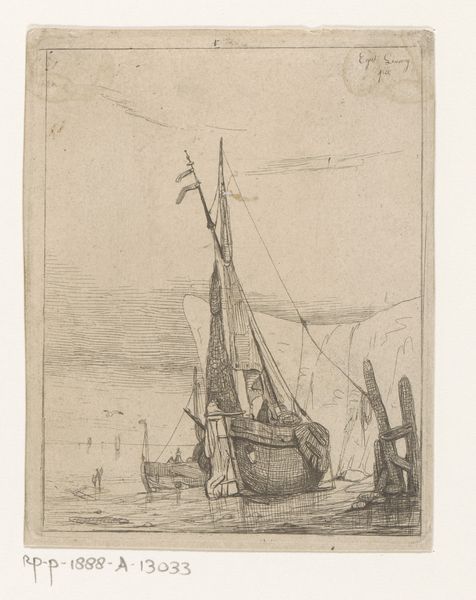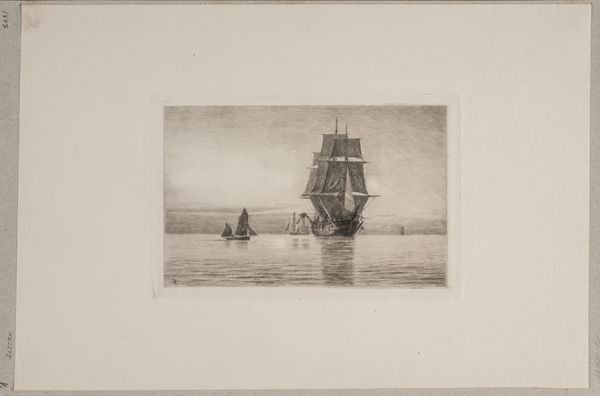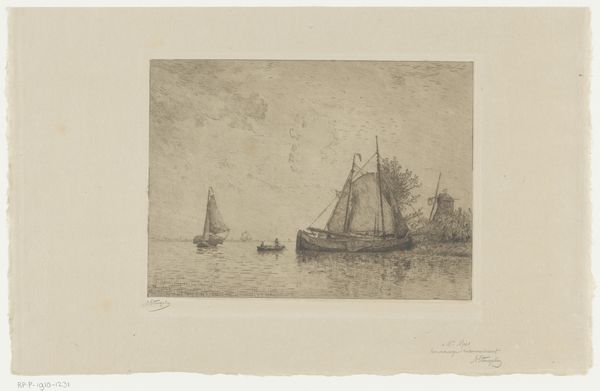
drawing, print, paper, ink
#
drawing
#
water colours
# print
#
landscape
#
paper
#
ink
#
watercolour illustration
#
watercolor
#
realism
Dimensions: height 140 mm, width 176 mm
Copyright: Rijks Museum: Open Domain
Editor: Here we have "Zeilschepen in haven" or "Sailboats in the Harbor" by Willem (I) Steelink, created sometime between 1848 and 1870. It's a drawing, or perhaps a print, using ink and watercolors on paper. It gives off a very quiet, almost melancholic mood. What do you see in this piece, especially considering the historical context? Curator: Well, immediately, the print speaks to the increasing industrialization and urbanization of the Netherlands during that period. Look at the contrast. You've got these beautiful, traditional sailboats, but they're clustered in a harbor dominated by what seems to be the looming structures of a developing city. The harbor shifts from being purely for transport or trade into being a staging ground for change. Editor: That's a great point. It’s easy to get lost in the details of the boats, but the looming city is undeniable. Do you think Steelink was making a statement about industrialization? Curator: Possibly, but it's nuanced. Art from this time was often commissioned or served a specific social function. It's quite possible that this was created for a rising merchant class, to remind them of traditional, maritime achievements, while also promoting the fruits of modernized ports that were now creating this class and their livelihoods. So in that light, it's not really critique, but possibly, subtle propaganda. Editor: I hadn’t thought of it that way! The harbor as a symbol of both the past and the future, presented to the individuals benefiting from that future. Curator: Precisely. And think about the accessibility of prints; how does making art affordable shape public discourse? It's less about personal expression and more about visual dialogue on a societal level. Editor: This has definitely changed how I see the artwork; it makes me curious about who owned prints like this and how they interpreted them. Curator: Absolutely, understanding the artwork in its socio-economic ecosystem offers compelling angles beyond purely aesthetic appreciation.
Comments
No comments
Be the first to comment and join the conversation on the ultimate creative platform.
